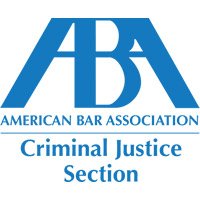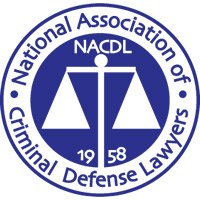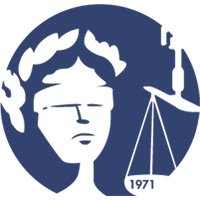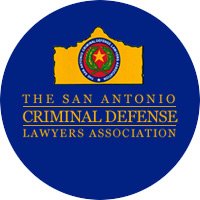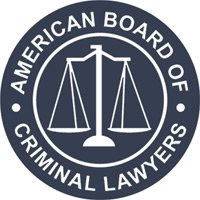PRELIMINARY QUESTIONS [FED. EVID RULE 104]
The Rules provide that preliminary questions concerning: (a) qualification of person to be a witness, (b) existence of a privilege or, (c) admissibility of evidence, must be determined by the court outside the presence of the jury. Federal Rule of Evidence 104. The rules of evidence do not apply to such proceedings, thus hearsay is admissible. See Rules 1101(d) and 104(a), Federal Rules of Evidence.
STATEMENTS OF CO-CONSPIRATORS
For example, under the rules, the admissibility of co-conspirators’ statements, were formerly a question for the jury. U.S. v. Apollo, 476 F.2d 156 (5th Cir. 1973). Now, pursuant to Rule 104(a), the trial court has sole responsibility for determining the admissibility of extra- judicial conspirator’s statements under rule 801(d)(2)(E). United States v. James, 590 F.2d 575 (5th Cir. 1979). To establish admissibility of such statements the prosecution must demonstrate that:
- a conspiracy existed,
- both the declarant and the defendant voluntarily joined the conspiracy,
- the statement was made “during the course” of the conspiracy, and
- “in furtherance” of the
See Bourjaily v. U.S., 483 U.S. 171, 107 S.Ct. 2775, 97 L.Ed.2d 144 (1987); U.S. v. Santiago, 837
F.2d 1545, 1549 (11th Cir. 1988); U.S. v. Ascarrunz, 838 F.2d 759, 762 (5th Cir. 1988);
U.S. v. Smith, 833 F.2d 213, 218-22 (10th Cir. 1987); U.S. v. Krohn, 573 F.2d 1382 (10th Cir.
1978); U.S. v. Jones, 542 F.2d 186, 202 n.11 (4th Cir.), cert. denied, 426 U.S. 922 (1976);
U.S. v. Boucher, 796 F.2d 972, 974 (7th Cir. 1986).
WHAT STANDARD IS APPLIED?
The Supreme Court adopted a “preponderance of the evidence” standard for the admission of co-conspirator’s statements, rejecting any higher standard such as “clear and convincing” or “beyond a reasonable doubt”. Bourjaily v. U.S., 483 U.S. 171, 97 L.Ed.2d 144, 152-53, 107 S.Ct. 2775 (1987).
“We find ‘nothing to suggest that admissibility rulings have been unreliable or otherwise wanting in quality because not based on some higher standard.'” Bourjaily v. U.S., 483 U.S. 171, 97 L.Ed.2d at 153.
Failure to reassert the objection may result in a waiver of that issue on appeal. See U.S. v. Chaney, 662 F.2d 1148, 1154 (5th Cir. 1980) (limiting review to “plain error” standard, where, “at the close of evidence, the appellant did not request that the trial court determine whether the prosecution had…establish[ed] by a preponderance of the evidence that a conspiracy existed”).
Where an element of the offense is specific intent, counsel should contend that more proof is be required to prove the existence of a conspiracy requisite for the admission of a co-conspirator’s statement U.S. v. Davis, 583 F.2d 190 (5th Cir. 1978) [to sustain conviction for conspiracy the government must prove at least the degree of criminal intent necessary for the substantive offense, specific intent requires the government to prove that the defendant voluntarily and intentionally violated a known legal duty).
WHAT EVIDENCE MAY BE CONSIDERED?
Prior to the Supreme Courts opinion in Bourjaily v. U.S., 483 U.S. 171, 97 L.Ed.2d 144, 152-53, 107 S.Ct. 2775 (1987) appellate courts had held that the trial court should look only to non-hearsay evidence, “independent of the statement itself”.
“Otherwise hearsay would lift itself by its own bootstraps to the level of competent evidence”. U.S. v. Stroupe, 538 F.2d 1063, 1065 (5th Cir. 1976).
See e.g., Glasser v. U.S., 315 U.S. 60, 74-75 (1942); U.S. v. Petrozziello, 548 F.2d 20, 22-23 (1st Cir. 1977); U.S. v. James, 590 F.2d 575, 578-80 (5th Cir.) (en banc), cert. denied, 442 U.S. 917 (1979); U.S. v. Santiago, 582 F.2d 1128, 1133 (7th Cir. 1978); U.S. v. Bell, 573 F.2d 1040, 1043-44 (8th Cir. 1978); U.S. v. Jackson, 627 F.2d 1198, 1217-1218 (D.C. Cir. 1980); U.S. v. Nixon, 418 U.S. 683, 701 n.14 (1974).
In Bourjaily v. U.S., 483 U.S. 171, 107 S.Ct. 2775 97 L.Ed.2d 144 (1987), the Supreme Court held that a trial court may consider the co-conspirator’s hearsay statement in addition to other matters when deciding its admissibility. That is, the court has sanctioned looking to what is by definition, unreliable evidence, to determine that evidences’ reliability. In Bourjaily, other corroborating evidence, independent of the incriminating hearsay statements, was together with the co-conspirator=s statements held sufficient to establish the existence of the conspiracy. Id.
See also U.S. v. Perez, 823 F.2d 854, 855 (5th Cir. 1987) [such hearsay can “be considered along with the other evidence in determining whether the hearsay declarant was the defendant’s co- conspirator”]; U.S. v. Ochs, 842, F.2d 515 (1st Cir. 1988) [hearsay and non-hearsay evidence, coupled together, proved by a preponderance of the evidence that a conspiracy existed and that the defendant, against whom the hearsay evidence was offered, was a member of the conspiracy]; U.S.
- Emuegbunam, 268 F.3d 377 (6th Cir. 2001)[while court may consider content of co-conspirator statements as part of proof of a conspiracy, they are not enough by themselves to establish the existence of a conspiracy or the defendants role in it.].
Thus the co-conspirators statements alone will not suffice to render them admissible if additional information does not establish the conspiracy and the defendants participation in it. U.S. v. Silverman, 861 F.2d 571 (9th Cir. 1988) [when the proponent of the co-conspirator’s statement offers no additional proof of defendant’s knowledge of and participation in the conspiracy, the statement must be excluded from evidence].
ACTUAL HEARING REQUIRED?
Two Fifth Circuit panels have given lip service to the fact that “such a hearing is mandated by U.S, v. James“.
See U.S. v. Grassi, 616 F.2d 1295, 1300 (5th Cir.), cert. denied, 449 U.S. 956 (1980);
U.S. v. Perry, 624 F.2d 29, 31 (5th Cir. 1980) [allowing the government an “interlocutory appeal” under 18 U.S.C. ‘ 3731 from an unfavorable ruling];
U.S. v. Vinson, 606 F.2d 149 (6th Cir. 1979).
Contra U.S. v. Hawkins, 661 F.2d 436 (5th Cir. 1981).
“Defendants challenge the trial court’s decision not to hold a hearing pursuant to U.S. v. James to determine the admissibility of coconspirator statements. Under James, decided by this Court sitting en banc, a coconspirator’s hearsay statement is not admissible unless the trial court determines the Government has established by a preponderance of the evidence independent of the statement itself that a conspiracy existed, that the coconspirator and the defendant against whom the statement is offered were members of the conspiracy, and that the statement was made during the course of the conspiracy. The Court in James held that a hearing on this issue was preferred but not required.” U.S. v. Hawkins, 661 F.2d at 449.
The James court, however, took pain to note that a hearing is the “preferred” course, and that in any event, their opinion established only the “minimum standard for admissibility of co- conspirator statements” and that “[N]othing stated [in the opinion] shall prevent a trial judge from requiring more meticulous procedures”. U.S. v. Hawkins, 661 F.2d at 583. However, with the abolition of the James constraints for determining the admissibility of co-conspirator’s statements, the preference for such an independent hearing is in doubt. See U.S. v. Perez, 823 F.2d 854, 855 (5th Cir. 1987).
NOT ENOUGH TO PROVE THE CONSPIRACY OR THAT BOTH ACCUSED AND DECLARANT VOLUNTARILY PARTICIPATE IN SAME
It must be borne in mind that merely showing a conspiracy existed and that both the defendant and the declarant voluntarily become members of same does not meet the requisites of Rule 801(d)(2)(E). “In addition to a showing that a conspiracy existed and the Defendant voluntarily participated in it, Rule 801(d)(2)(E) requires that the particular statement offered have been made both “during the course” and “in furtherance” of the conspiracy.
See U.S. v. Meacham, 626 F.2d 503, 510-11 n.8 (5th Cir. 1980);
U.S. v. Postal, 589 F.2d 862 (5th Cir.), cert. denied, 444 U.S. 832; U.S. v. Caro, 569 F.2d 411 (5th Cir. 1978);
U.S. v. Wilkerson, 469 F.2d 963, 968 (5th Cir. 1972), cert. denied, 410 U.S. 986 (1973);
U.S. v. Williamson, 450 F.2d 585, 590-91 (5th Cir. 1971), cert. denied, 405 U.S. 1026;
U.S. v. Green, 600 F.2d 154 (8th Cir. 1979);
U.S. v. Eubanks, 591 F.2d 513 (9th Cir. 1979);
U.S. v. Lang, 589 F.2d 92 (2d Cir. 1978);
U.S. v. Holder, 652 F.2d 449, 450 (5th Cir. 1981);
U.S. v. Portier, 623 F.2d 1017, 1020 (5th Cir. 1980).
See generally 4 Louisell, Federal Evidence ‘ 427at 33.
“DURING COURSE”
There was a “general rule that the arrest of the coconspirators puts an end to the conspiracy” and a coconspirator’s subsequent “statement incriminating the other defendants [is] not admissible at their trial.” U.S. v. Meacham, 626 F.2d at 503. However, in U.S. v. Recio, 537 U.S. 270, 123 S.Ct. 819 (2003), the Supreme Court recently held that a conspiracy does not automatically terminate when the government frustrates its objectives (emphasis added). The Ninth Circuit opinion below had held that the drug conspiracy ended when the police arrested a courier and seized the drugs. Thus, it reasoned, two men arrested in a subsequent sting could not be charged with the original conspiracy.
But see U.S. v. Palow, 777 F.2d 55, 59-60 (6th Cir. 1985) [statements by co-conspirator implicating defendant after defendants’ arrest was not in course of the conspiracy];
State v. Rivenbark, 533 A.2d 271 (Md. 1987)[co-conspirator’s statements made long after the burglary that was the principal aim of the conspiracy were not admissible against defendants];
Fuson v. Jago, 773 F.2d 55, 59-60 (6th Cir. 1985) [statements by co-conspirator implicating the defendant after his arrest held not to be “during the course of the conspiracy”].
Contra U.S. v. Baines, 812 F.2d 41 (1st Cir. 1987). Although Rule 801(d)(2)(E) expressly requires that a co-conspirator’s statement is only admissible if it was made “during the course” of a conspiracy, at least one court has held that a statement regarding the possibility of the defendant’s entry into a conspiracy (obviously made before the conspiracy was entered into) was nevertheless admissible under the Rule. Baines, 812 F.2d at 41.
“IN FURTHERANCE”
Similarly, statements made by a fellow co-conspirator who is also a paid government informer are not admissible under the “co-conspirator’s exception” to the hearsay rule because, recognizing the “agency fiction” underlying this rule, such individual was not at the time acting as the agent of his co-conspirators, but rather as the agent of the government. Furthermore, statements were not made “in furtherance of the conspiracy but rather to frustrate it”.
See U.S. v. Wilkerson, 469 F.2d 963, 968 (5th Cir. 1972);
U.S. v. Williamson, 450 F.2d 585, 590-1 (5th Cir. 1981), cert. denied, 405 U.S. 1026 (1972).
See also U.S. v. Summers, 598 F.2d 450 (5th Cir. 1979);
Mere puffing, bravado or braggadocio, even by one who has been shown to have become a member of the conspiracy, does not fit the requirements of Rule 801(d)(2)(E), where the statement could not be said to have been made to further some conspiratorial goal. U.S. v. Fielding, 645 F.2d 719 (9th Cir. 1981).
However, buffing, boasts and braggadocio are admissible when the declarant uses them to obtain the confidence of others involved in or being recruited for the conspiracy. U.S. v. Santiago, 837 F.2d 1545, 1549 (11th Cir. 1988); U.S. v. Miller, 664 F.2d 94, 98 (5th Cir. Unit B, 1981), cert. denied, 459 U.S. 854 (1982).
CO-CONSPIRATOR’S EXCEPTION SHOULD NOT BE EXPANDED
The drafters of the Federal Rules evinced their intention that the co-conspirator’s exception not be expanded:
“The agency theory of conspiracy is at best a fiction and ought not serve as a basis for admissibility beyond that already established.” Advisory Committee Notes, Federal Rules of Evidence 801(d)(2)(E).
See U.S. v. Emmert, 829 F.2d 805 (9th Cir. 1987) [attempt to admit co-conspirator’s statement under Federal Rules of Evidence, Rule 801(d)(2)(E) is precluded when the same is an inadmissible statement of memory or belief offered to prove the fact remembered or believed under Federal Rules of Evidence. 803(3)].
ADVISORY COMMITTEE OBSERVED DISTINCTION BETWEEN HEARSAY RULE AND CONFRONTATION CLAUSE
-Furthermore, in drafting the Federal Rules of Evidence the Advisory Committee noted the distinction between the Hearsay Rule and the Confrontation Clause:
“[T]he impact of the Clause clearly extends beyond the confines of the hearsay rule…. In recognition of the separateness of the Confrontation Clause and the Hearsay Rule and other exclusionary principles, the exception set forth in Rules 803 and 804 are stated in terms of exemption from the general exclusionary mandate of the hearsay rule, rather than in positive terms of admissibility.” Advisory Committee Notes, Federal Rules of Evidence Art. VIII.
IS THERE A CONFRONTATION OBJECTION BEYOND HEARSAY?
Despite the Advisory Committee’s admonitions, the Supreme Court has held that the co- conspirator’s exception is so “steeped in our jurisprudence”, that the Sixth Amendment Confrontation Clause provides no greater protections than those found in Rule 801(d)(2)(E) of the Federal Rules of Evidence, Bourjaily v. U.S., 483 U.S. 171, 97 L.Ed.2d 144, 158 (1988).
“[T]here can be no separate Confrontation Clause challenge to the admission of a co- conspirator’s out-of-court statement”.
In a separate opinion the Supreme Court also rejected as a “radical proposition” the contention that co-conspirator declarations should not be admitted without demonstrating that the declarant is reasonably unavailable to testify and be cross-examined. U.S. v. Inadi, 475 U.S. 387, 394 (1986) [holding Ohio v. Roberts, 1448 U.S. 56 (1980) requirements of additional indicia of reliability, not applicable to co-conspirator’s statements].
But most recently the court revisited the issue of an unavailable witness’ statements and the Confrontation Clause. In Crawford v. Washington, 124 S.Ct. 1354 (2004), the court there found that out-of-court statements by witnesses that are testimonial are barred, under the Confrontation Clause, unless witnesses are unavailable and defendants had prior opportunity to cross-examine witnesses, regardless of whether such statements are deemed reliable by court. In the later case Davis v. Washington, 547 U.S. 813 (2006), the Supreme Court held that hearsay evidence elicited with an eye toward use in future criminal proceedings is testimonial.
Whether specific testimony will be held to be testimonial or not will depend of the type of testimony and the facts of a particular case. In Michigan v. Bryant, 131 S. Ct. 1143, the Court carved out an “ongoing emergency” exception to the basic principles of Crawford, holding the identification and description of a shooter and the location of the shooting were “not testimonial statements because they bore the ‘primary purpose . . . [of enabling the] police assistance to meet an ongoing emergency.’ Therefore, their admission at Bryant’s trial did not violate the Confrontation Clause.” In a strongly-worded dissent, Justice Antonin Scalia, author of the Crawford and Melendez-Diaz decisions, criticized the majority opinion for distorting “our confrontation clause jurisprudence and leav[ing] it in a shambles.”
In Melendez-Diaz v. Massachusetts, 129 S.Ct. 2527 (2009), the Court found drug-testing reports to fall within Crawford’s class of “testimonial” statements, and precluded the use of ex parte affidavits as a substitute for an actual representative of the laboratory. Faced with the follow- up question of “whether the Confrontation Clause permits the prosecution to introduce a forensic laboratory report containing a testimonial certification—made for the purpose of proving a particular fact—through the in-court testimony of a scientist who did not sign the certification or perform or observe the test reported in the certification,” the Supreme Court in Bullcoming v. New Mexico, 131 S. Ct. 2705 (2011) reversed a recent New Mexico Supreme Court decision which permitted such a practice. In so holding, the Court placed heavy emphasis upon the certifying function of the lab tech who conducted the gas chromatography testing. While true that the lab tech plays the primary function of a scrivener in reading a gas chromatograph, his act of certifying the blood as untampered with and noting that the test followed strict protocols made his report markedly not mechanical and “meet for cross-examination.” Were the Court to support the belief of the New Mexico Supreme Court, Justice Ginsberg noted, eye-witnesses who do nothing more than note that the traffic light was green at the time of the accident would fall beyond the purview of the Confrontation Clause. Highlighting the inadequacy of such a confrontation-by-proxy arrangement as that permitted by the New Mexico Court, Justice Ginsberg, citing the Supreme Court in United States v. Gonzalez-Lopez, reminded the Government that “if a ‘particular guarantee’ of the Sixth Amendment is violated, no substitute procedure can cure the violation, and ‘[n]o additional showing of prejudice is required to make the violation ‘complete.’’” The Court also rejected the notion that blood sample chromatographs and their certifying affidavits were not testimonial, highlighting the vast similarity between such a lab report and the drug testing reports deemed testimonial in Melendez-Diaz.
While Justice Sotomayor’s concurrence agrees that the statement at issue was produced for the purposes creating an “out-of-court substitute for trial testimony” and was thus testimonial, she separately notes several other issues not presented by the present case which might make such a report of an individual’s blood alcohol level non-testimonial. These include: medical records necessary for treatment; the testimony of an individual supervisor who witnessed the lab technician carrying out the test; the use of a certified expert who testified as to the content of a lab report not itself entered into evidence; or, lastly, an instance where only the gas chromatogram itself (the machine generated printout) found admission into evidence. The questions presented by this concurring opinion generate a new wave of doubt and mystery as to the fate of the Confrontation Clause.
For instance, the circuit court have has held that evidence falling within the business or public records exceptions, including autopsy reports, are not testimonial. See: U.S. v. Feliz, 467 F.3d 227 (2nd Cir. 2006) (autopsy report not testimonial); U.S. v. Torres-Villalobos, 487 F.3d 607 (8th Cir. 2007) (warrants of deportation are not testimonial); U.S. v. Weiland, 420 F.3d 1062 (9th Cir. 2005) (records of conviction and routine certifications of public records are not testimonial);
U.S. v. Lopez-Moreno, 420 F.3d 420 (5th Cir. 2005) (ICE computer records are public records and not testimonial); U.S. v. Mendez, 514 F.3d 1035 (10th Cir. 2008) (ICE database is not testimonial).
OTHER QUESTIONS OF ADMISSIBILITY UNDER RULE 104(a)
Rule 104(a) similarly vests in the trial court the responsibility to determine the admissibility of hearsay statements under one of the exceptions set out in Rule 803 or 804,
the voluntariness of confessions:
See Jackson v. Denno, 378 U.S. 368 (1964),
the application of the marital privilege:
See U.S. v. Pensinger, 549 F.2d 1150 (8th Cir. 1977),
the mental capacity of declarant of hearsay statements,
See Huff v. White Motor Corp., 609 F.2d 286, 291 (7th Cir. 1979);
Cf. U.S. v. Fowler, 605 F.2d 181 (5th Cir. 1979) (noting admissibility of pretrial identifications);
See generally 1 Weinsteins, Evidence, & 104[07], 104-52;
Cf. U.S. v. Peele, 574 F.2d 489 (9th Cir. 1978),
and hypnotically induced or enhanced testimony,
See U.S. v. Awkard, 597 F.2d 667 (9th Cir.), cert. denied, 444 U.S. 885 (1979).
RULES OF EVIDENCE NOT APPLICABLE
In making its determination as to admissibility under Rule 104(a), the court is not bound by the rules of evidence.
See Federal Rule of Evidence 104(a);
U.S. v. Killebrew, 594 F.2d 1103 (6th Cir.), cert. denied, 422 U.S. 933 (1979) [not error to admit hearsay at suppression hearing];
U.S. v. Lee, 541 F.2d 1145 (5th Cir. 1976);
U.S. v. Haldeman, 559 F.2d 31 (D.C. Cir. 1976);
U.S. v. Tussell, 441 F. Supp. 1092 (M.D. Pa. 1977);
U.S. v. Raddatz, 447 U.S. 667, 679, 100 S.Ct. 2406, 2414, 65 L.Ed.2d 424
(1980)[same].
See also In the Matter of the Search of 949 erie Street, Racine, Wisconsin, 824 F.2d 538, 540 (7th Cir. 1987)[hearsay admissible at 41 (e) motion for return of seized property];
In the Matter of the Search of the Premises known as 6455 South Yosemite, Englewwod Colorado, 897 F.2d 1549, 1552 (10th Cir. 1990)[hearsay admissible with respect to 41(e) motion which does not concern legality of the search].
RELEVANCY CONDITIONED ON FACT [FED. R. EVID. RULE 104(b)]
When the “relevancy” of evidence or testimony is conditioned on the fulfillment of a factual “condition precedent”, there is no requirement of a prior determination by the court regarding its admissibility. Rather, such evidence may be admitted “subject to” the introduction of evidence sufficient to support a finding of the fulfillment of the condition. The requirement of identification or authentication of evidence is a form of relevancy conditioned upon a fact.
See In re James Long Construction Co., 557 F.2d 1039 (4th Cir. 1977)[the genuineness of signatures under Rule 901];
U.S. v. Stearns, 550 F.2d 1167 (9th Cir. 1977) [photographs];
U.S. v. Levine, 546 F.2d 658, 668 (5th Cir. 1977).
“OTHER CRIMES” EVIDENCE [RULE 404(b)]
For example, the Supreme Court recently held that a trial court need not decide for itself whether an accused committed an extraneous offense under Rule 404(b) before admitting such “other crimes” or misconduct evidence. Instead, “such evidence should be admitted if there is sufficient evidence to support a finding by the jury that the defendant committed the similar act”.
Huddleston v. U.S., 485 U.S. 681, 108 S.Ct. 1496, 99 L.Ed.2d 771 (1988).
The court held that unlike the required preliminary showing under Rule 104(a) for the admission of co-conspirator’s statements, see Bourjaily v. U.S., 483 U.S. 171, 97 L.Ed.2d 144 (1988), no such Rule 104(a) preliminary determination need be made at all prior to admitting “other crimes” evidence under Rule 404(b).
“We conclude that a preliminary finding by the court that the Government has proved the act by a preponderance of the evidence is not called for under Rule 104(a). This is not to say, however, that the Government may parade past the jury a litany of potentially prejudicial similar acts that have been established or connected to the defendant only by unsubstantiated innuendo. Evidence is admissible under Rule 404(b) only if it is relevant.”
Procedurally, the Supreme Court placed its stamp of imprimatur upon an after-the-fact determination under Rule 104(b).
“In determining whether the Government has introduced sufficient evidence to meet Rule 404(b), the trial court neither weighs credibility nor makes a finding that the Government has proved the conditional fact by a preponderance of the evidence. The court simply examines all the evidence in the case and decides whether the jury could reasonably find the conditional fact …by a preponderance of the evidence….
The trial court has traditionally exercised the broadest sort of discretion in controlling the order of proof at trial, and we see nothing in the Rules of Evidence that would change this practice. Often the trial court may decide to allow the proponent to introduce evidence concerning a similar act, and at a later point in the trial assess whether sufficient evidence has been offered to permit the jury to make the requisite finding. If the proponent has failed to meet this minimal standard of proof, the trial court must instruct the jury to disregard the evidence.
As if this were not a sufficient exercise in sophistry, the Court went on to note [quoting from Bourjaily]:
“We emphasize that in assessing the sufficiency of the evidence under Rule 104(b), the trial court must consider all evidence presented to the jury. ‘[I]ndividual pieces of evidence, insufficient in themselves to prove a point, may in accumulation prove it. The sum of an evidentiary presentation may well be greater than its constituent parts.”
To console the citizen’s understandable concern regarding this cavalier handling of such prejudicial evidence, the Court offered the following:
“We share petitioner’s concern that unduly prejudicial evidence might be introduced under Rule 404(b)…. We think, however, that the protection against such unfair prejudice emanates not from a requirement of a preliminary finding by the trial court, but rather from four other sources: first, from the requirement of Rule 404(b) that the evidence be offered for a proper purpose; second, from the relevancy requirement of Rule 402 – as enforced through Rule 104(b); third, from the assessment the trial court must make under Rule 403 to determine whether the probative value of the similar acts evidence is substantially outweighed by its potential for unfair prejudice… and fourth, from Federal Rule of Evidence 105, which provides that the trial court shall, upon request, instruct the jury that the similar acts evidence is to be considered only for the proper purpose for which it was admitted.”
But see George v. State, 890 S.W.2d 73, 75 & 76 (Tex. Crim. App. 1994)[it has long been the law in Texas that the standard of proof necessary to admit extraneous offenses is beyond a reasonable doubt];
State v. Terrazas, 944 P.2d 1194 (Ariz. 1997) [en banc][we do not agree with the Preponderance of the evidence standard set forth in Huddleston, but hold that the standard to be applied to prior bad acts evidence is that set forth in State v. Hughes, 426 P.2d 386 (Ariz. 1967), requiring proof by clear and convincing evidence].
HEARINGS OUT OF PRESENCE OF JURY [FED. R. EVID. RULE 104(c)]
Hearings on the admissibility of confessions “shall be conducted out of the hearing of the jury.” FED. R. EVID. Rule 104(c); Jackson v. Denno, 378 U.S. 368 (1964).
Hearings on other preliminary matters must be held outside the presence of the jury when the interests of justice so require, U.S. v. Fosher, 568 F.2d 207 (1st Cir. 1978) [determination of admissibility of “mug shots” should be made at hearing out of presence of jury];
U.S. v. Bear Killer, 534 F.2d 1253 (8th Cir. 1976), cert. denied, 429 U.S. 846 [at the suppression hearing], or when an accused is a witness, if he so requests, Rule 104(c).
TESTIMONY BY THE ACCUSED FED. R. EVID. Rule 104(d)
In Simmons v. U.S., 390 U.S. 377, 88 S.Ct. 967, L.Ed.2d 1247 (1968), the Supreme Court held:
“If a defendant testifies in support of a motion to suppress on Fourth Amendment grounds, his testimony is not admissible against him at trial over his objection.”
The theory being that an accused should not be required to forfeit one constitutional right in order to exercise another. See also U.S. v. Montos, 421 F.2d 215, 220 n.2 (5th Cir.), cert. denied, 397 U.S. 1022 (1970). However, a defendant’s pretrial testimony may become admissible for impeachment purposes where that defendant testifies inconsistently at trial thereafter.
Cf. Harris v. New York, 401 U.S. 222, 91 S.Ct. 643, 28 L.Ed.2d 1 (1971) [a statement obtained in violation of Miranda is admissible for impeachment];
Advisory Committee Notes, FED. R. EVID. Rule 104(d) [warning that the “rule does not address itself to questions of subsequent use of testimony given by an accused at a hearing on a preliminary matter”].
ADVISORY COMMITTEE’S NOTE RULE 104
In its report, the Senate Judiciary Committee noted that 104(d) was not a license to a defendant to gratuitously raise issues not necessary to the decision of the preliminary matter. It wrote:
“Rule 104(d). Preliminary Questions: Testimony by accused Under rule 104(c) the hearing on a preliminary matter may at times be conducted in front of the jury. Should an accused testify in such a hearing, waiving his privilege against self-incrimination as to the preliminary issue, rule 104(d) provides that he will not generally be subject to cross- examination as to any other issue. This rule is not, however, intended to immunize the accused from cross-examination where, in testifying about a preliminary issue, he injects other issues into the hearing. If he could not be cross-examined about any issues gratuitously raised by him beyond the scope of the preliminary matters, injustice might result. Accordingly, in order to prevent any such unjust result, the committee intends the rule to be construed to provide that the accused may subject himself to cross-examination as to issues raised by his own testimony upon a preliminary matter before a jury. Report on Federal Rules of Evidence, No. 93-1277, 93rd Cong., 2d Session, Senate, at 24 (1974).
See also Hearings before Special Subcommittee on Reform of Federal Criminal Laws of Committee on the Judiciary, House of Representatives, 93rd Cong., 1st Sess., on Proposed Rules of Evidence at 121-122.
See also Federal Rule of Evidence 105(d) at 236.
As noted below, 104(d) was shortened by the Advisory Committee recognizing that this was a developing constitutional area, best left for case law. Counsel should caution the accused, who seeks to testify as to a preliminary matter, not to volunteer any more than is necessary.
Texas Rule 104(d) expressly provides that an accused does not by testifying upon a preliminary matter out of the hearing of the jury, become subject to cross-examination as to other issues in the case.


